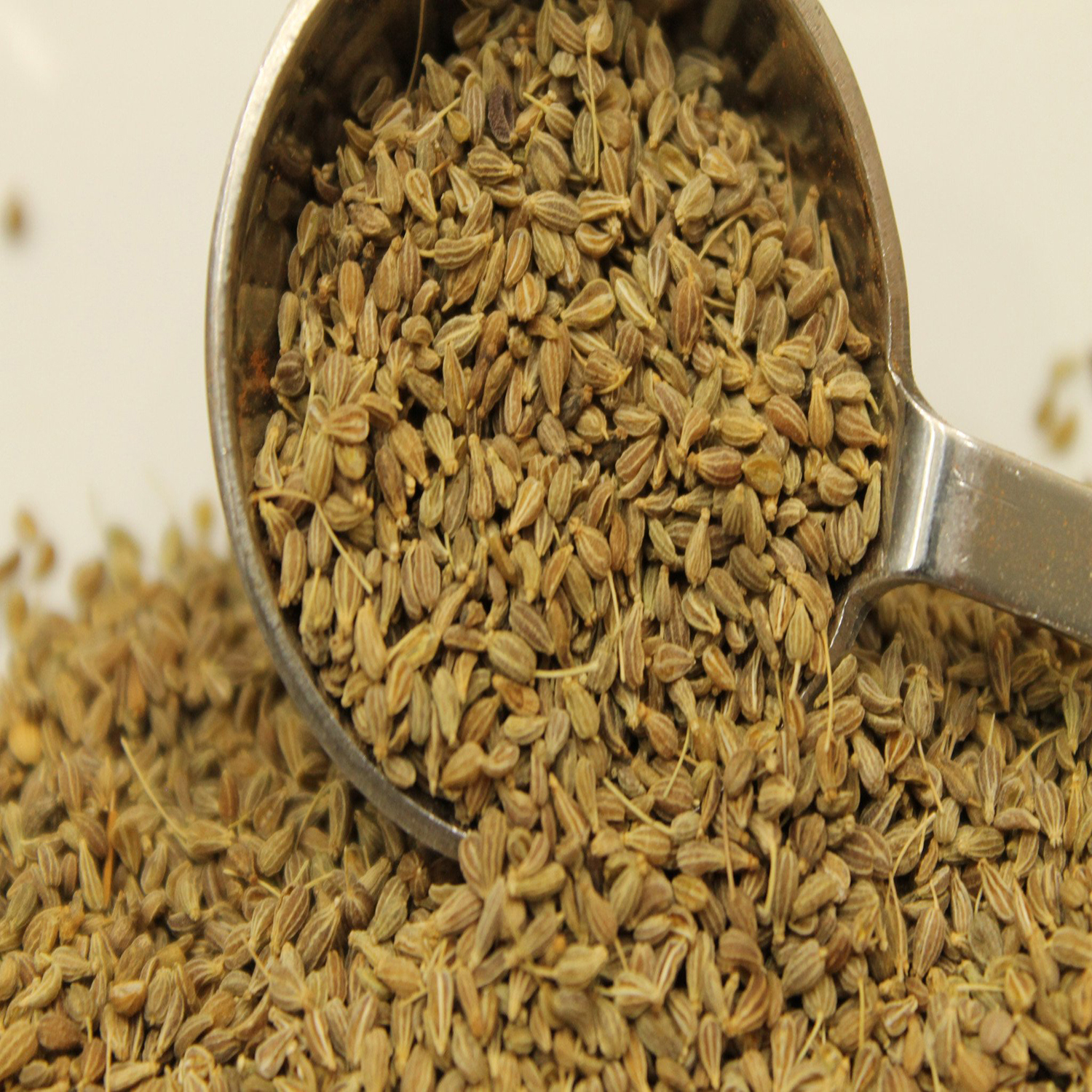Anise Pimpinella anisum Seeds in Bulk packaging Shipped in 20″ FCL Container
Login to view prices
Common name: Anise
Latin name: Pimpinella anisum L.
Family: Apiaceae (Umbelliferae)
Other names: Engl.: anise, anise burnet saxifrage, aniseed. Deu.: Anis. Suom.: anisruoho, anis. Sven.: anis. Fran.: anis, anis vert.
It should be differentiated from the so-called star anise, Illicum verum Hooker f. (fam. Magnoliaceae). It contains oils of similar chemical composition and, therefore similar odor flavor, and utilization. It is a small evergreen tree or bush, native to China.
Anise-hyssop (Agastache foeniculum formerly Agastache anethiodora), is a perennial plant of the Lamiaceae family, native to the United States, which has a characteristic anise scent and flavor. Common names for this plant include Korean mint or anise mint.
Botanical Origin:
Common name: Anise
Latin name: Pimpinella anisum L.
Family: Apiaceae (Umbelliferae)
Other names: Engl.: anise, anise burnet saxifrage, aniseed. Deu.: Anis. Suom.: anisruoho, anis. Sven.: anis. Fran.: anis, anis vert.
It should be differentiated from the so-called star anise, Illicum verum Hooker f. (fam. Magnoliaceae). It contains oils of similar chemical composition and, therefore similar odor flavor, and utilization. It is a small evergreen tree or bush, native to China.
Anise oil is sometimes adulterated with star anise oil, fennel oil, or synthetic anethole.
Anise-hyssop (Agastache foeniculum formerly Agastache anethiodora), is a perennial plant of the Lamiaceae family, native to the United States, which has a characteristic anise scent and flavor. Common names for this plant include Korean mint or anise mint.
Description:
Anise, a native of the Orient, is a hapaxanthic annual herb, growing about 1 to 2 ft. high under cultivation. The greenish-gray, dried, ripe fruit, commercially called seed,tapers to a point,and varies in length from 2 to 5 mm.
Anise seed is a popular flavoring agent, widely employed in baked goods, confectionery, and liqueurs. The volatile oil can be recovered from the fruit (seed) by steam distillation. In many instances the oil has now replaced the seed for flavoring purposes.
Range & Habitat:
Anise, Pimpinella anisum L., is an herbaceous annual native to Egypt and to the Mediterranean region. It is cultivated in Europe (southern & southeastern Europe), Asia, India, Mexico, North Africa, India, and China.
The plant requires a warm and long frost-free growing season of at least 120 days -from planting to harvest- (the vegetative period of anise is long 130-140days). The reported life zone for anise production is 8 to 23°C.
The soil for Anise is a light; deep, well drained (friable), fertile or moderately rich, sandy loam is desirable for good growth of anise. The physical nature of the soil should be such that it lends itself well to pulverizing, yet retains moisture; then the small seed can be planted at a uniform depth, and cultivation of the small, young seedlings becomes feasible. A soil pH of 6.3 to 7.3 is desired. Anise appears to respond favorably to nitrogen fertilization by yielding a greater quantity of high-quality fruit.
Planting & Cultivation:
According to Stockberger, anise is grown from seed sown usually early in spring directly in the field in rows 2 to 3 feet apart. The seeds should not be more than 2 years old, are sown thickly, about two seeds to the inch (or a dozen to the feet), and covered half inch deep. Light cultivation is needed for weed control. The small white flowers bloom in midsummer (three months after planting), and seed maturation usually occurs one month after pollination, when the oil content in the dried fruit is about 2.5%.
Harvesting and Preparing for the Market:
In most anise producing countries the plants are pulled and stacked in the field to dry. In some cases the tops are cut off by hand, tied in bundles, and then stacked in conical piles with the fruiting heads toward the center so that the seeds continue to mature. As a rule, the plant is pulled or cut when all the seeds of the umbel are still green; then they may continue to mature after the bundles have been shocked with the seed ends toward the center. In this way considerable amount of seed continues to ripen, whereas those seeds that are mature do not discolor and shatter from the plant.
The plant may be pulled by hand piled, tops inward, in stacks about 6 ft. high, or they may be mowed and at once built up into cocks of the same height. After 4 to 5 days the seed will have ripened; it should then be threshed out, thoroughly cleaned, and bagged for the market.
As soon as the tips of the seeds turn a grayish-green color they should be harvested; when left exposed to the weather, they quickly turn brown or black.
Yield of seed per Acre:
Under favorable conditions, a yield of 400 to 600 lb. of seed per Acre may be expected.
Export Markets:
We export our products to many countries all over the world. USA, France, Germany, China, Malaysia, Algeria, Morocco, Indonesia…etc
Quotation:
- Incoterms: FOB Egypt or China
- Quantity: one 20″ FCL Container Minimum
- Specification: 100% natural and Pure quality
- Documentation: COA, MSDS, TDS, GC Peaks
- Packaging: Bulk Packaging
- Payment terms: TT in advance to Our bank account
- Lead time: Shipping through 10 days from receipt of the payment.
- Sea Shipping Time: 35 days
- Air shipping time: 10 days
Quality Certificates:
- ISO 9001-2015
- ISO 22000-2005
- GMP accredited by AQC Middle East FZE
- KOSHER Certificate
- Halal Certificate
- ORGANIC Certificate accredited by CERES GmbH Germany
- NOP Certificate accredited by CERES GmbH Germany
- Egyptian Ministry of Health Permission
Contact us please to receive other supporting documents for our Oils :
- COA
- MSDS
- TDS
Branding Services
We also can do customized packaging for you to pack whatever size you like. We can help in designing labels, selecting good packets or bags. We deliver integrated solutions under your brand..
Organically Certified product Available upon request
Additional information
| Weight | 12000 kg |
|---|---|
| Dimensions | 610 × 244 × 259 cm |
| Country of Origin | China, Egypt |
| Ship from | China, Egypt |
| Herbs Packaging | PE bags 25 Kg, PE Bags 50 kg, Paper Bag 25 kg, Paper Bag 50 kg |
| Cultivation Type | Organic, Conventional |
| HS Code | 09109990 |
| Custom Branding & Packaging | Yes, OEM Custom banding, designing and packaging are available for that product |
| Herbal OEM Packaging | Kraft Bag, Kraft Bag with transparent window, Kraft bag with open side, Glass Jar, Glass jar Spices with holed lid, Tea bag, Tea bag with paper bag, Tea Cylinder packaging, Tin Packaging |
| Documentation & Certifications | Allergen Free Certificate, Bovine Spongiform Encephalophathy (BSE) Certificate, GMO Certificate, GRAS Status Statement, Herbal Origin Statement, Organic Certificate, Pesticide Residual Certificate, Halal Certificate, KOSHER Certificate, Researches & Studies, Certificate of Analysis (COA), Technical Data Sheet (TDS) |
-
Login to view prices
-
Login to view prices
-
Login to view prices
Fennel Foeniculum vulgare Seeds in Bulk packaging Shipped in 20″ FCL Container
Login to view prices Read more -
Login to view prices





